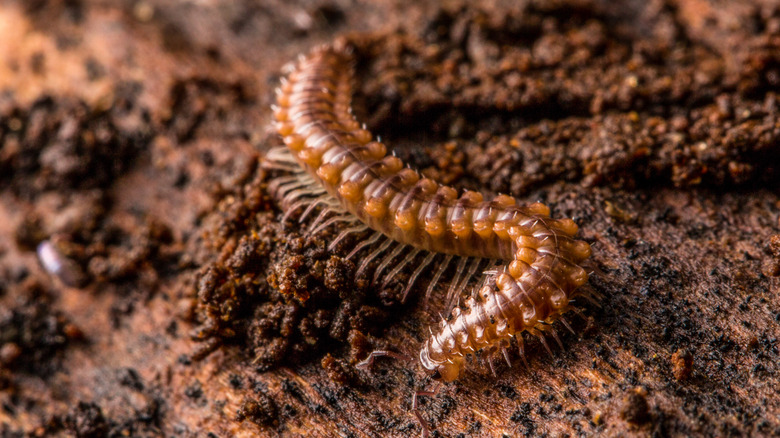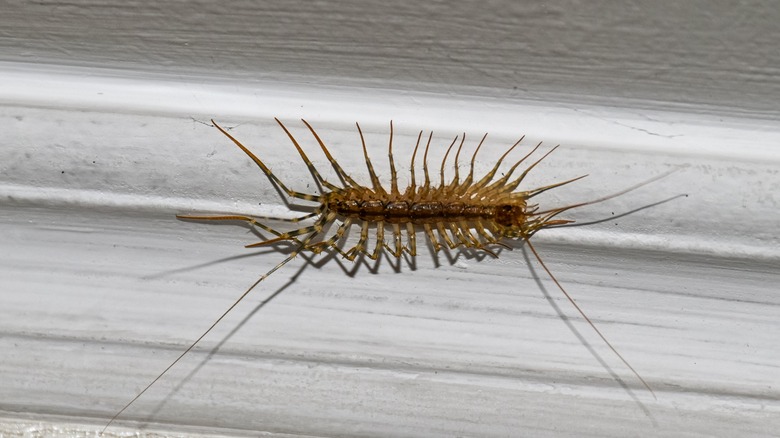Critters in the garden: we see them, we know them, we…want to know if we should love them. With a long list of insects and pests that have the potential to ruin a harvest, it’s easy to feel uneasy when you come across a creepy crawler among your veggies. However, not all bugs are equal in the eyes of the garden. Hold off on exterminating centipedes and millipedes because they’re actually helping to control the population of insects and true pests, and they help feed your plants with healthy soil.
Centipedes and millipedes are fairly similar in appearance, but they are distinct from one another, and neither of them are insects. While centipedes have one pair of legs per body segment, millipedes can have two or four. Millipedes have a rounded appearance, and centipedes look flattened, with their legs sticking out. Millipedes do not bite, and they roll into a coil when disturbed. On the other hand, centipedes can sting with their pincers and can move quickly.
Garden benefits of centipedes and millipedes

While millipedes only eat rotting organic matter, a large part of the centipede diet is insects and other arthropods. Centipedes can help you control other common garden pests, like aphids, which will benefit the health of your garden in the long run. Especially if you’ve run into issues with insects and other pests, it’s best to leave centipedes to do their thing in your garden beds.
Millipedes won’t help you with pest control, but they assist in the composting process. They like to eat dead or rotting plant matter, such as your roots from past growing seasons or the many items in your compost bin. Through this process, they enrich your soil with nutrients and help your garden thrive.
Centipedes and millipedes both prefer dark, damp places, so you’d likely only encounter them while planting or working with your compost pile. Most centipedes are so small that their sting can’t even break human skin. If worrying about getting stung is going to ruin your gardening zen, you could wear sturdy gloves as extra insurance. As long as their presence isn’t completely overwhelming your soil, leave them be and reap the benefits of their diet choices.
Key caveats

Too much of a good thing can be a bad thing. If you notice an overabundance of millipedes or centipedes in your garden and you see that they’ve begun feeding on plants, it could be time to intervene. Removing excess mulch and harvesting fruit before it becomes overripe can help cut down on a large millipede population. You can also set traps for them by laying a simple board or can on top of your soil, then collecting and destroying the bugs.
While it’s rare to need to remove centipedes or millipedes from the garden, of course having them in your house is a different matter. Dark, damp areas, usually where other insects are also living, can sometimes become a temporary home for centipedes. It’s still worth the effort to reconsider squishing the next centipede you find in your home and instead relocate it to your garden, or even leave it be and let it eat insects in your home.
Neither centipedes nor millipedes survive long in a house due to dryness, and they don’t pose risks to humans or property, so it’s generally best to simply wait out any small occurrences of millipedes or centipedes indoors. Sealing any cracks beneath doors and between the bricks of your home each season can also help prevent them from entering. Checking the foundation and direct surroundings of your home to eliminate dampness can also help keep them in your garden instead of your house.



